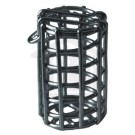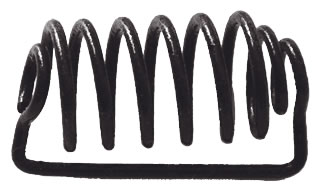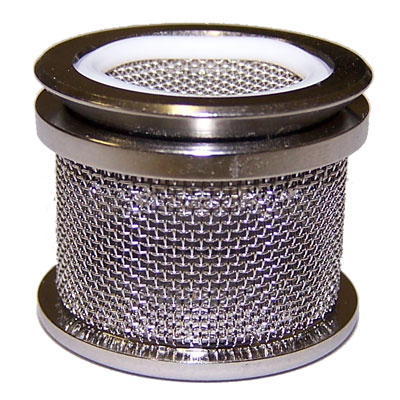About Capsule and Tablet Sinkers
Capsule Sinkers
Dissolution reproducibility will be severely restricted if the dosage form is not in the same position in the vessel for each test. Floating dosage forms can present a real problem and may be weighted with a sinker which should be heavy enough to cause it to sink to the bottom of the vessel.
A sinker is commonly formed from a wire helix. The USP states “A small, loose piece of non-reactive material, such as not more than a few turns of wire helix, may be attached to dosage units that would otherwise float. An alternative sinker device is shown in Figure 2a. Other validated sinker devices may be used.”
The sinker referenced in 'figure 2a' is commonly referred to as the Japanese Sinker (shown below).
In reality, hand forming sinkers from a few turns of wire will not make a reproducible sinker. Commercially produced sinkers are manufactured using a computerised winding machine to ensure uniformity for the wire spirals and will give better results. Even then the wire thickness needs to be uniform to avoid errors .
There are many designs of sinker available today
 |
 |
 |
 |
 |
 |
|
Japanese Sinker (Figure 2a Ref USP Above) |
Spiral or Coil Sinker | 3 Prong Sinker | 'Sotax Style' Spiral Sinker | Basket Sinker | Breath Film Sinker |
A short video showing different sinker types can be seen here.
http://www.labhut.com/downloads/videos.html#capsulesinkers
Consistent sinkers are extremely important. Even a small variation in wire diameter can result in test failure. The two sinkers shown below resulted in a test failure from the sinker on the right because of poor manufacturing and thicker wire.
 |
 |
| Good Sinker | Poor Sinker |
Sinkers are precision parts and manufacturing processes and QC systems should conform to ISO 9001:2008 requirements. ISO requires all measuring tools to be calibrated using NIST Traceable standards and guarantees consistency.
Problems Associated with Sinkers
Sinkers are usually manufactured from stainless steel. In some cases however, this can react with the dosage form, in which case a PTFE coated sinker can be used. Coated sinkers are most common in the spiral form. Examples can be seen here
Incorrect sinker selection can result in the wire occluding the surface of the dosage form thus restricting the free flow of media over the surface and reducing the dissolution rate (such as in the example above)
Gummy excipients can also clog the wire and affect the flow of media.
Selecting a Sinker
Selecting the correct sinker for your application can require some trial and error. However there are some guidelines to follow to help with this process. Some important factors need to be taken into consideration.
-Sinker Size
Size and dimension is important. The sinker should have minimal surface contact with the tablet as this can affect the dissolution rate. Some dosage forms swell and it is important that the sinker takes account of this if required. It should be easy to put the dosage form in the sinker without scratching the surface
-Sinker Material
The majority of sinkers are made from 316 stainless steel and are resistant to water or standard dissolution media. PTFE Coated Sinkers can be used with magnetic retrieval systems, or where there may be a reaction or adsorption between steel and the tablet. These tend to have a shorter lifetime as once the surface is scratched the iron inside will quickly corrode. Plastic coated “3 prong” sinkers can also be used although this style will have direct contact with the tablet which is not necessarily desirable.
-Sinker Weight
In general the sinker should be heavy enough to sink the dosage form to the bottom of the vessel. Heavier than that would suggest more wire than in necessary with the associated possible flow effects. For spiral sinkers this means the fewest number of spirals required to sink the dosage form but enough the prevent it coming out of the wire when wet.
Capsules tend to be very buoyant because of their air content, but once the outer surface has dissolved, the microspheres inside can then move freely.
-Special Sinkers
Special sinkers are also available for immediate release dosage forms and films. For 'coin' shaped dosage forms a circular 'basket sinker' may be used. Similar sinkers can be used for some microsphere or powder applications. Custom sinkers are available for special dosage forms
Useful Links


